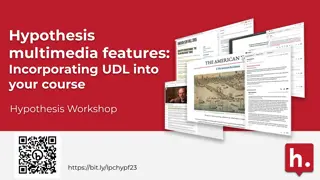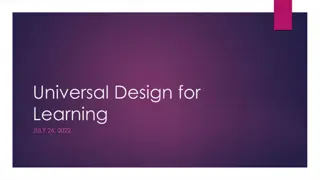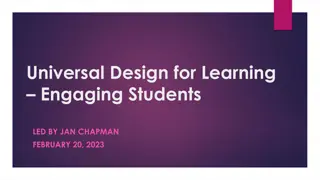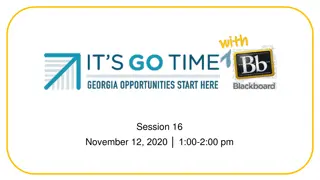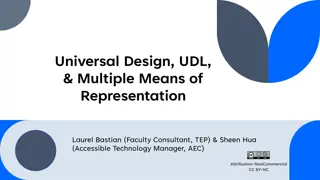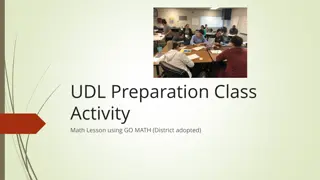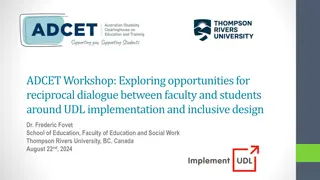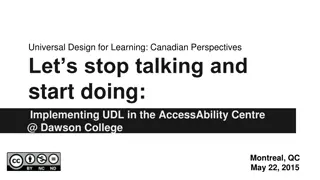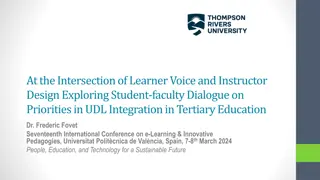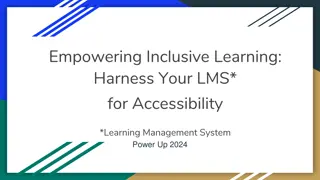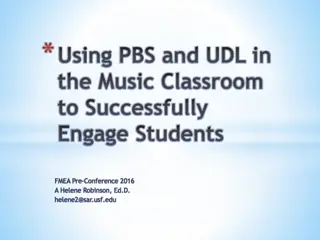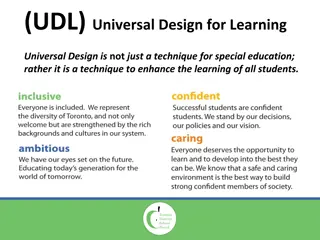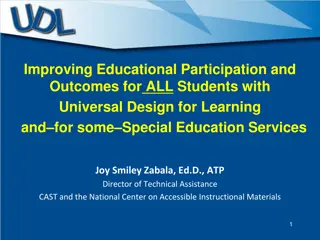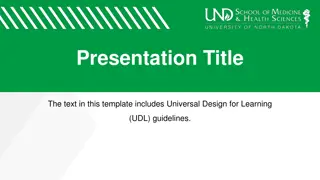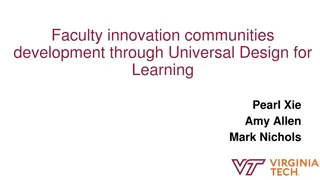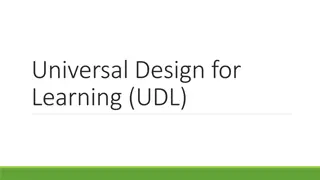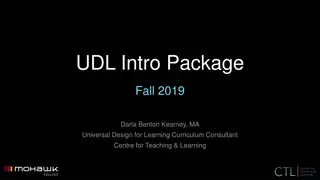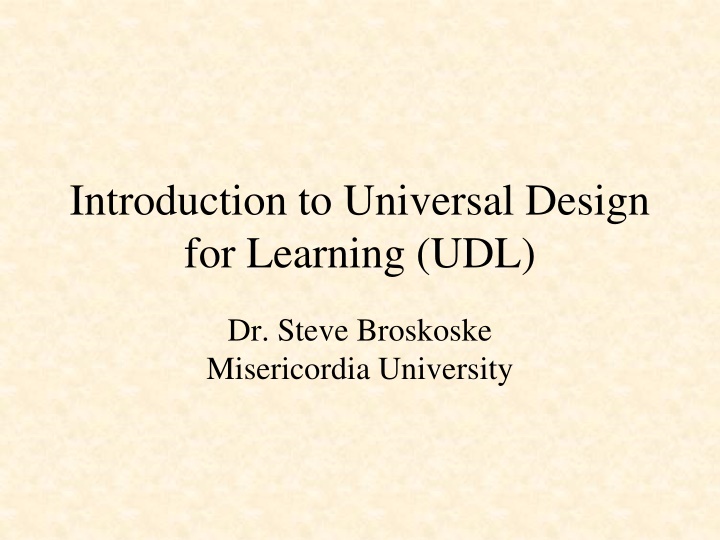
Universal Design for Learning and Its Impact
Explore the origins of Universal Design, its application in architecture, and its significance in ensuring inclusivity for all individuals. Discover how Universal Design in education enhances teaching and learning through the framework of Universal Design for Learning (UDL).
Download Presentation

Please find below an Image/Link to download the presentation.
The content on the website is provided AS IS for your information and personal use only. It may not be sold, licensed, or shared on other websites without obtaining consent from the author. If you encounter any issues during the download, it is possible that the publisher has removed the file from their server.
You are allowed to download the files provided on this website for personal or commercial use, subject to the condition that they are used lawfully. All files are the property of their respective owners.
The content on the website is provided AS IS for your information and personal use only. It may not be sold, licensed, or shared on other websites without obtaining consent from the author.
E N D
Presentation Transcript
Introduction to Universal Design for Learning (UDL) Dr. Steve Broskoske Misericordia University
Where did Universal Design Come From? Individuals with Disabilities Act (IDEA) Rehabilitation Act of 1973, Section 504 Architectural practice of Universal Design. Architecture
Universal Design Universal Design has it's basis in Section 504 of the Rehabilitation Act which mandated that public buildings be accessible to all.
Universal design does not focus on the very tall or the very short, the person who uses a wheelchair or the person whose hands are affected by arthritis, the person who is 7.5 years old or 75 years old. It does, however, embrace each of these people as possible users of a space (or product), and eliminates bias against them consumers have a right to expect their unique needs will be met by design. Mary Jo Peterson, CKD, CBD, CAPS Kitchen and bath designer
Universal Design Don t retrofit or fix the building to accommodate people with special needs. Construct the building to meet the needs of all users of a space. Universal design will become a way of life, and benefit all people. ramp
Universal Design Text messaging on cell phones Automatic opening doors Curb cuts in sidewalks
Universal Design in Education According to CAST: Universal Design for Learning (UDL) is a framework to improve and optimize teaching and learning for all people based on scientific insights into how humans learn. CAST is a nonprofit education research and development organization that created the Universal Design for Learning framework and UDL Guidelines.
Universal Design in Education Universal Design for Learning (UDL): Physical access to school buildings. Access to the curriculum: teaching, learning, and assessment.
What does universal mean? The universal in universal design does not imply one optimal solution for everyone. Rather, it reflects an awareness of the unique nature of each learner and the need to accommodate differences, creating learning experiences that suit the learner and maximize his or her ability to progress. (CAST website)
What Does Universal Design Entail? According to CAST, Universal Design involves: This Photo by CAST.org is licensed under CC BY
UDL Paradigm Shift UDL Pre-UDL Students with disabilities fall along a continuum of learner differences within the classroom. Students with disabilities are considered in a separate category.
UDL Paradigm Shift UDL Pre-UDL All students learn differently. Teachers fix teaching to accommodate learner differences. Learners with disabilities are viewed as having a problem that needs to be fixed.
UDL Paradigm Shift Pre-UDL UDL Teacher adjusts instruction for students with disabilities. Teacher designs the curriculum in advance to accommodate all learners.
UDL Paradigm Shift UDL Pre-UDL Curriculum materials are varied and diverse to accommodate various learning styles. The major curricular vehicle is a textbook.
Who benefits from UDL? Learning differences. Cultural differences. Language differences. Physical differences. Sensory differences. Cognitive differences. Students with IEP s.
Technology and UDL Digital multimedia learning tools: Making UDL a reachable goal. Making attainment of UDL within reach of individual educators and students.
On the basic level, how can I design my materials to be accessible to ALL learners? Utilize readable fonts and font sizes. Use plenty of white space. Provide sufficient visual contrast between text and backgrounds. Minimize distractions: Background sounds and effects. Animated graphics. Visual crowding.
As We Learn About Technology in Modules 4 & 5 We will consider how to apply the principles of UDL in the educational materials we produce to benefit all learners.

